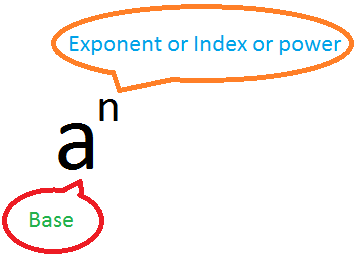Subscribe to our ▶️ YouTube channel 🔴 for the latest videos, updates, and tips.
Power of a Number
Here we will learn the Power of a Number.
We know a × a = a2, a × a × a = a3, etc., and a × a × a × .... n times = an, where n is a positive integer.
an is a power of a whose base is a and the index of power is n.
ap/q is the qth root of ap if p, q are positive integers.
a-n is the reciprocal of an where n is a positive rational number. Thus, an is a power of a for all values of n where n = positive/negative integer or positive/negative fraction. In fact, an is a power of a where n is any real number.
Examples on Power of a Number:
1. Find the value of 45.
Solution:
45 = 4 × 4 × 4 × 4 × 4 = 1024.
2. Find the value of 4-5.
Solution:
4-5 = Reciprocal of 45 = \(\frac{1}{4^{5}}\) = \(\frac{1}{4 × 4 × 4 × 4 × 4}\) = \(\frac{1}{1024}\).
3. Find the value of (1024)1/5.
Solution:
(1024)1/5 = 5th root of 4 × 4 × 4 × 4 × 4 = 5th root of 45 = 45/5 = 4.
Note: If a > 0, a ≠ 1, an is an exponent of a (read as exponential of a), where n is any real number.
Though positive or negative integral powers of positive or negative numbers can be found, it becomes difficult or impossible to find the value of any power of negative numbers in the set of real numbers. Hence, in what follows, for an we assume a > 0, a ≠ 1 and n is any real number.
From Power of a Number to HOME PAGE
Didn't find what you were looking for? Or want to know more information about Math Only Math. Use this Google Search to find what you need.



New! Comments
Have your say about what you just read! Leave me a comment in the box below. Ask a Question or Answer a Question.